3,485cc OHV Inline 6-Cylinder Engine 2 SU Carburetors 125bhp at 4,200rpm 4-Speed Manual Transmission Leaf Spring Suspension 4-Wheel Drum Brakes *Attractive Burgundy over Caramel livery *Rare left-hand drive, 3-position Drophead Coupe *Previously under single ownership for 37 years *A stately and elegant cruiser THE JAGUAR MK IV The name 'Jaguar' was first used by SS Cars Ltd in 1936 to denote its new high-performance sports model, the SS100; company founder William Lyons later recalled: 'I immediately pounced on Jaguar as it had an exciting sound to me.' 'SS' originally stood for the Swallow Sidecar & Coachbuilding Company, which had been founded in Blackpool, England by William Walmsley. The company branched out into motor manufacture in 1926, its first major success being an attractive sports saloon on the Austin Seven chassis, the design being the work of Walmsley's partner, one William Lyons. Relocation to Coventry followed and the Swallow range expanded to include models on Morris Cowley, Wolseley Hornet and Standard Sixteen chassis. Marque status arrived in October 1931 with the launch of the SS1, the chassis of which was supplied exclusively to Swallow by Standard, who also provided the six-cylinder side valve engine and four-speed gearbox. Although unspectacular in performance, the SS1 went some way towards establishing the pattern for future Jaguars, combining sporting good looks with a better-than-average specification and all at a bargain price. ('Jaguar' would be adopted as the marque name in March 1945, 'SS' having by then acquired a somewhat tarnished reputation). When peace came some six months later, the newly renamed Jaguar Cars, like the majority of Britain's motor manufacturers, commenced post-war production with a range of pre-war designs, albeit with some minor improvements. Essentially stopgap models pending the arrival of an entirely new generation of Jaguars, these comprised the compact 1½-Liter and the 2½/3½-Liter model, retrospectively known as the 'Mark IV', which still enjoyed an enviable reputation for strong performance, good road manners and well-appointed interiors. Built on a generous 120" (3,048mm) wheelbase, the Mark IV retained a separate chassis featuring beam front and live rear axle suspension on semi-elliptic springs, lever-arm dampers, Burman worm-and-nut steering and Girling mechanical brakes. The stylish all-steel coachwork was available in saloon or drophead coupé forms and featured the kind of luxurious and well-appointed interior that would become a Jaguar hallmark. Used by SS Cars since 1934, the engine was Standard's rugged seven-bearing six which in Jaguar specification was fitted with a Weslake overhead-valve cylinder head and coupled to a four-speed manual gearbox; in 3½-liter form capable of propelling the sturdy Mark IV to over 95mph. At the top of the Mark IV range was the decidedly voluptuous 3½-Liter Drophead Coupé, a full five-seater that boasted an ingenious three-position hood giving occupants the choice of open, closed or coupé de ville motoring. Utilizing the same all-steel body construction as its late 1930s SS Jaguar forebear, the newcomer appeared even more svelte thanks to a revised hypoid bevel rear axle that allowed the floor to be lowered by two inches. THE MOTORCAR OFFERED As post war Jaguars go, this left-hand drive Mark IV 3½ liter 3-position drophead coupe is evidently one of the rarer models to be sold in period. Finished in an attractive combination of burgundy over a caramel interior, the colors reflect the subdued yet sporting nature of the vehicle. Under enthusiast ownership for 37 years prior to be acquired by the consignor, the vehicle was kept in good running order during his stewardship and would further receive a restoration. Despite being conducted some time ago, the vehicle looks sharp today with good panel fitment and alignment. Inside, the story is very much the same, and the upholstery has been kept in good shape given its age. The dash feat
3,485cc OHV Inline 6-Cylinder Engine 2 SU Carburetors 125bhp at 4,200rpm 4-Speed Manual Transmission Leaf Spring Suspension 4-Wheel Drum Brakes *Attractive Burgundy over Caramel livery *Rare left-hand drive, 3-position Drophead Coupe *Previously under single ownership for 37 years *A stately and elegant cruiser THE JAGUAR MK IV The name 'Jaguar' was first used by SS Cars Ltd in 1936 to denote its new high-performance sports model, the SS100; company founder William Lyons later recalled: 'I immediately pounced on Jaguar as it had an exciting sound to me.' 'SS' originally stood for the Swallow Sidecar & Coachbuilding Company, which had been founded in Blackpool, England by William Walmsley. The company branched out into motor manufacture in 1926, its first major success being an attractive sports saloon on the Austin Seven chassis, the design being the work of Walmsley's partner, one William Lyons. Relocation to Coventry followed and the Swallow range expanded to include models on Morris Cowley, Wolseley Hornet and Standard Sixteen chassis. Marque status arrived in October 1931 with the launch of the SS1, the chassis of which was supplied exclusively to Swallow by Standard, who also provided the six-cylinder side valve engine and four-speed gearbox. Although unspectacular in performance, the SS1 went some way towards establishing the pattern for future Jaguars, combining sporting good looks with a better-than-average specification and all at a bargain price. ('Jaguar' would be adopted as the marque name in March 1945, 'SS' having by then acquired a somewhat tarnished reputation). When peace came some six months later, the newly renamed Jaguar Cars, like the majority of Britain's motor manufacturers, commenced post-war production with a range of pre-war designs, albeit with some minor improvements. Essentially stopgap models pending the arrival of an entirely new generation of Jaguars, these comprised the compact 1½-Liter and the 2½/3½-Liter model, retrospectively known as the 'Mark IV', which still enjoyed an enviable reputation for strong performance, good road manners and well-appointed interiors. Built on a generous 120" (3,048mm) wheelbase, the Mark IV retained a separate chassis featuring beam front and live rear axle suspension on semi-elliptic springs, lever-arm dampers, Burman worm-and-nut steering and Girling mechanical brakes. The stylish all-steel coachwork was available in saloon or drophead coupé forms and featured the kind of luxurious and well-appointed interior that would become a Jaguar hallmark. Used by SS Cars since 1934, the engine was Standard's rugged seven-bearing six which in Jaguar specification was fitted with a Weslake overhead-valve cylinder head and coupled to a four-speed manual gearbox; in 3½-liter form capable of propelling the sturdy Mark IV to over 95mph. At the top of the Mark IV range was the decidedly voluptuous 3½-Liter Drophead Coupé, a full five-seater that boasted an ingenious three-position hood giving occupants the choice of open, closed or coupé de ville motoring. Utilizing the same all-steel body construction as its late 1930s SS Jaguar forebear, the newcomer appeared even more svelte thanks to a revised hypoid bevel rear axle that allowed the floor to be lowered by two inches. THE MOTORCAR OFFERED As post war Jaguars go, this left-hand drive Mark IV 3½ liter 3-position drophead coupe is evidently one of the rarer models to be sold in period. Finished in an attractive combination of burgundy over a caramel interior, the colors reflect the subdued yet sporting nature of the vehicle. Under enthusiast ownership for 37 years prior to be acquired by the consignor, the vehicle was kept in good running order during his stewardship and would further receive a restoration. Despite being conducted some time ago, the vehicle looks sharp today with good panel fitment and alignment. Inside, the story is very much the same, and the upholstery has been kept in good shape given its age. The dash feat







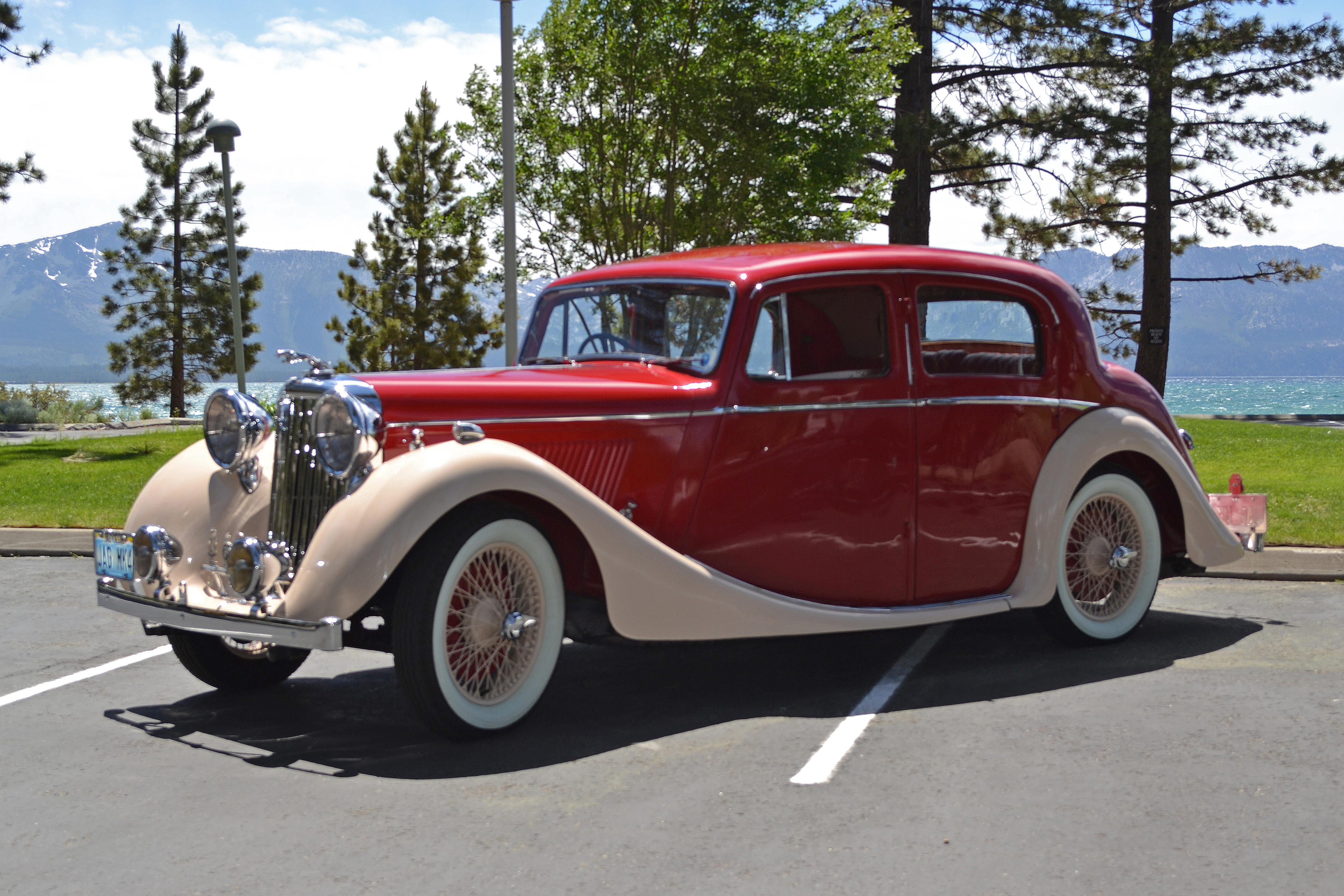

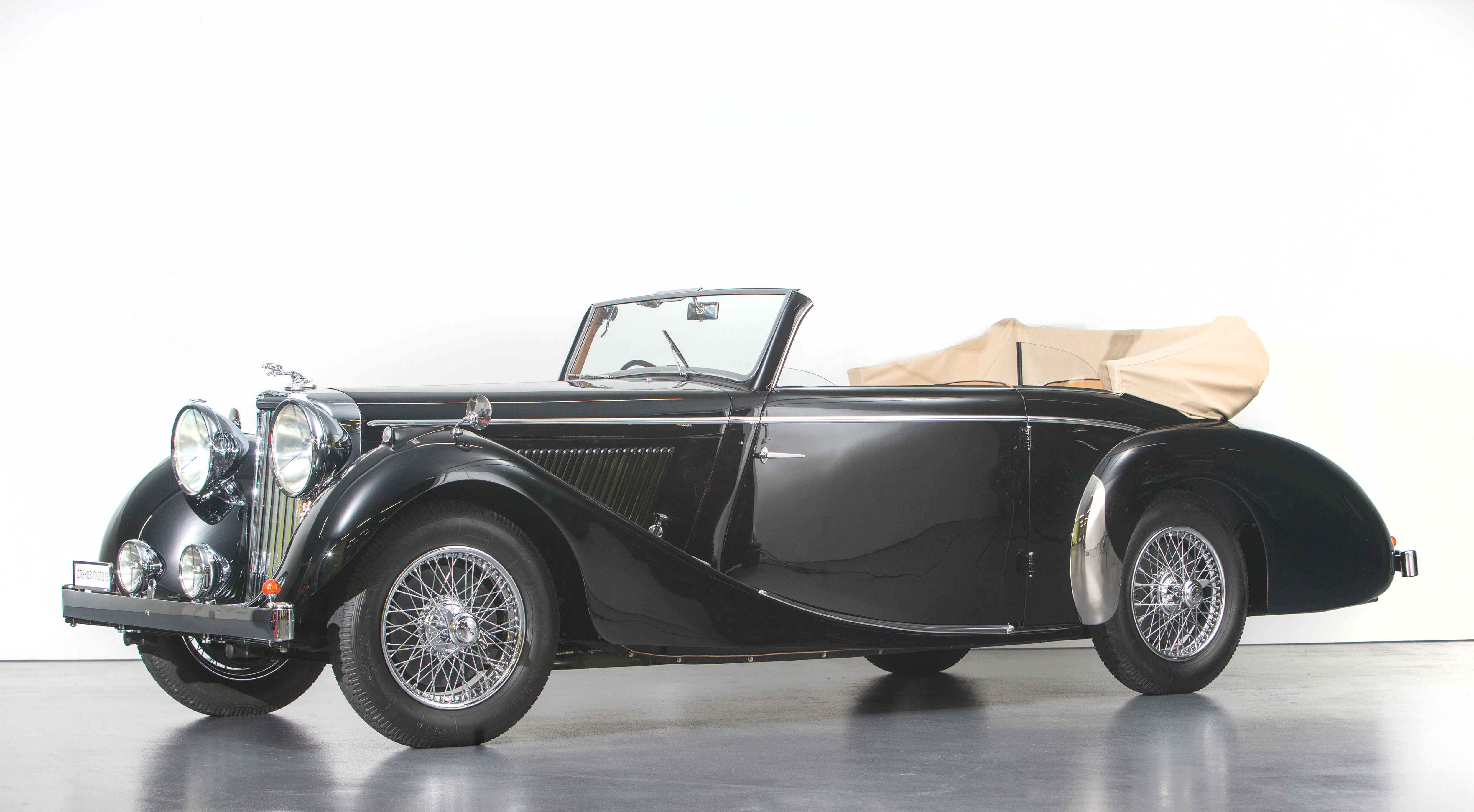
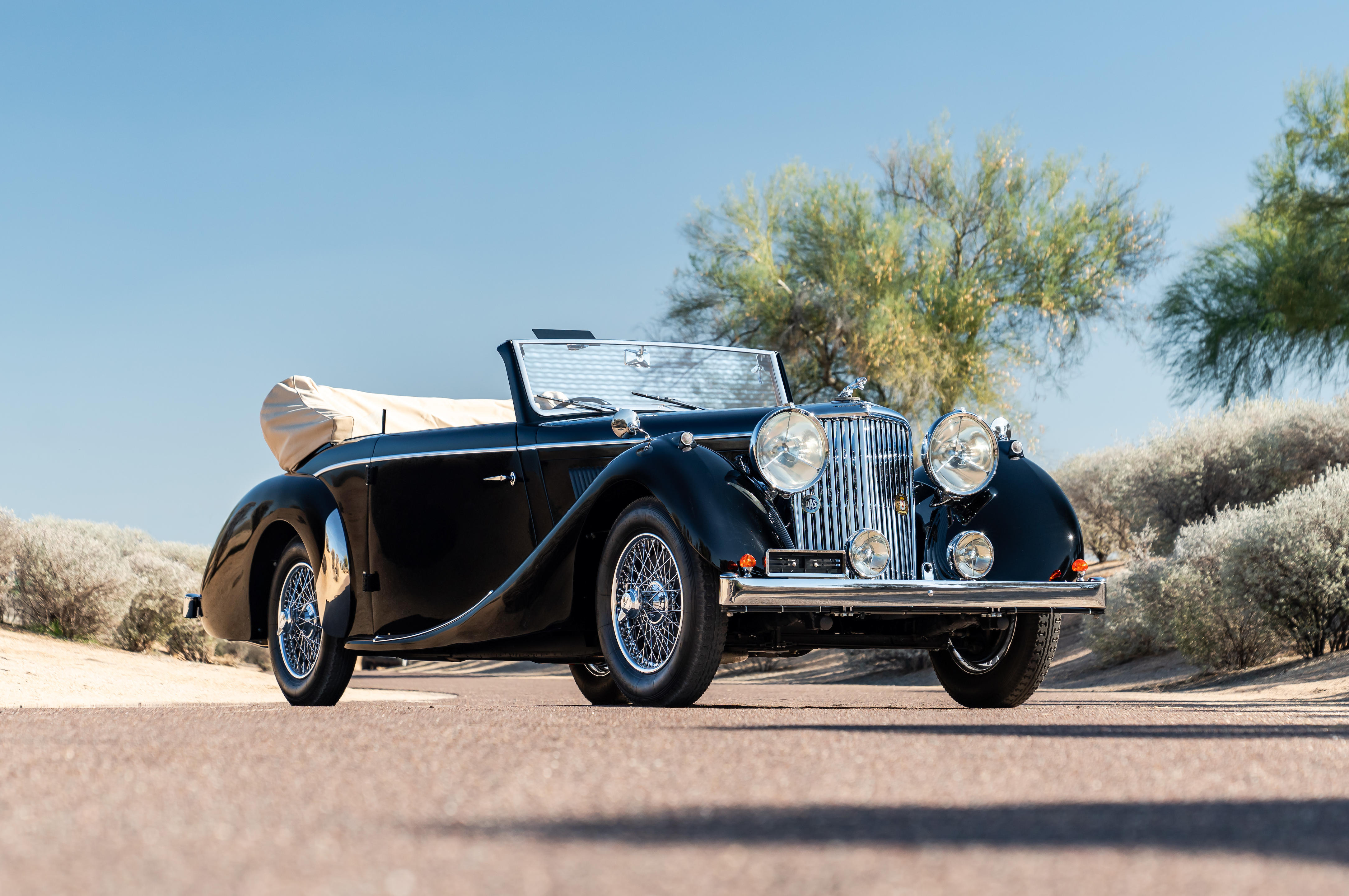

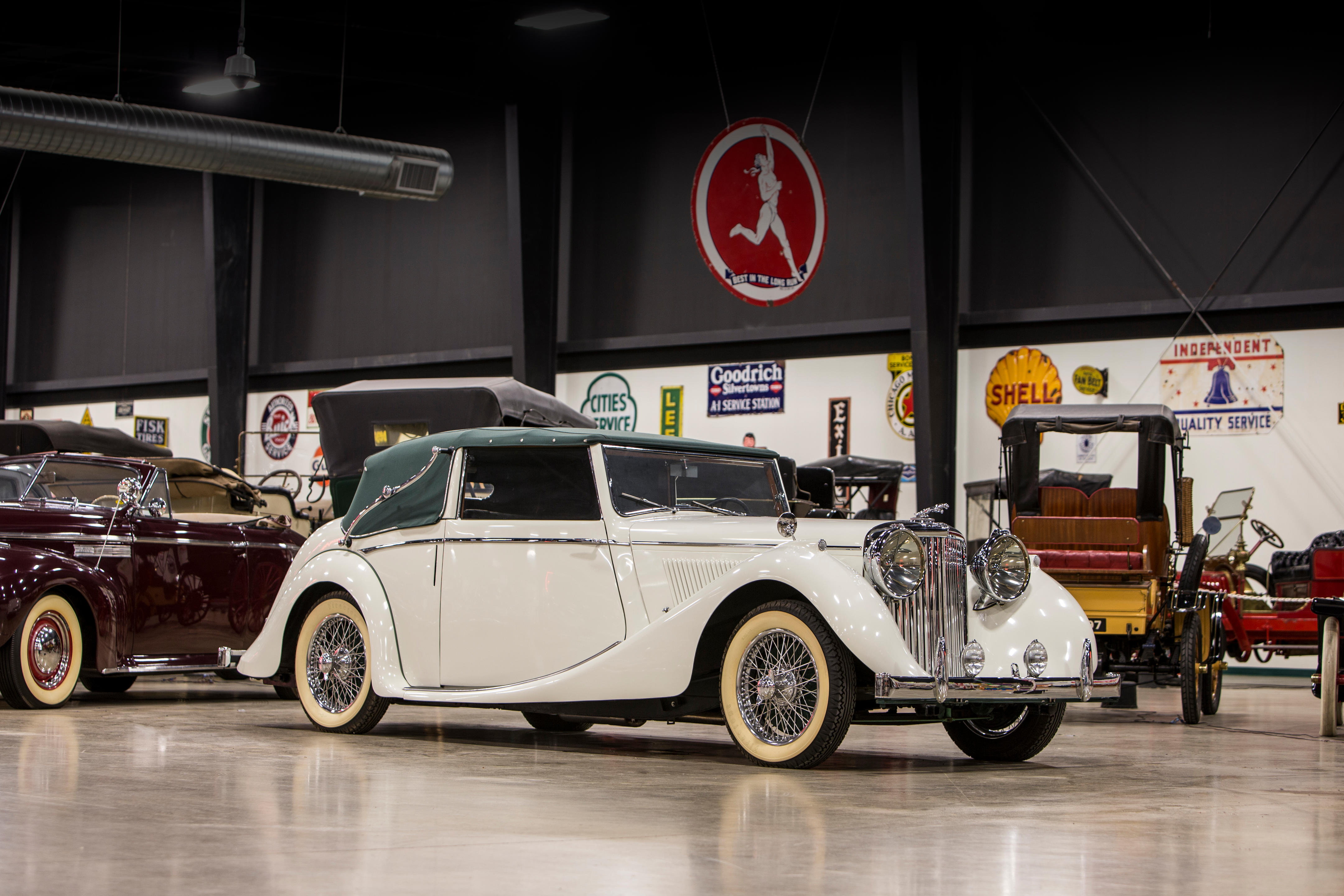
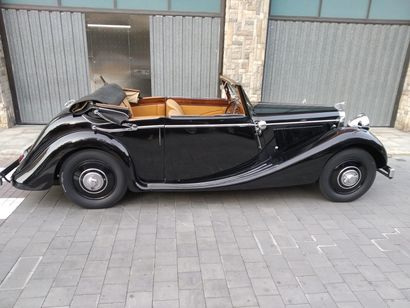
Try LotSearch and its premium features for 7 days - without any costs!
Be notified automatically about new items in upcoming auctions.
Create an alert